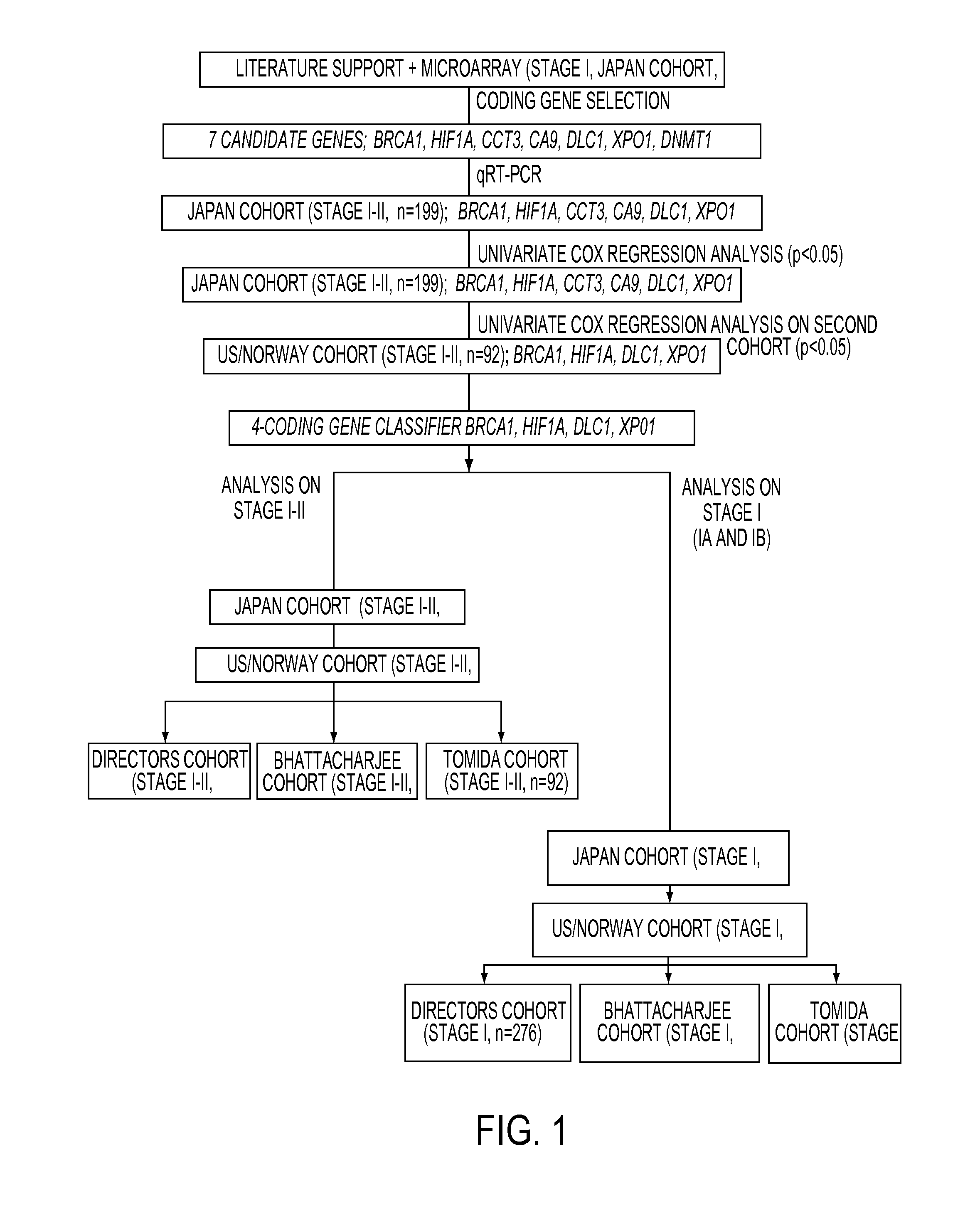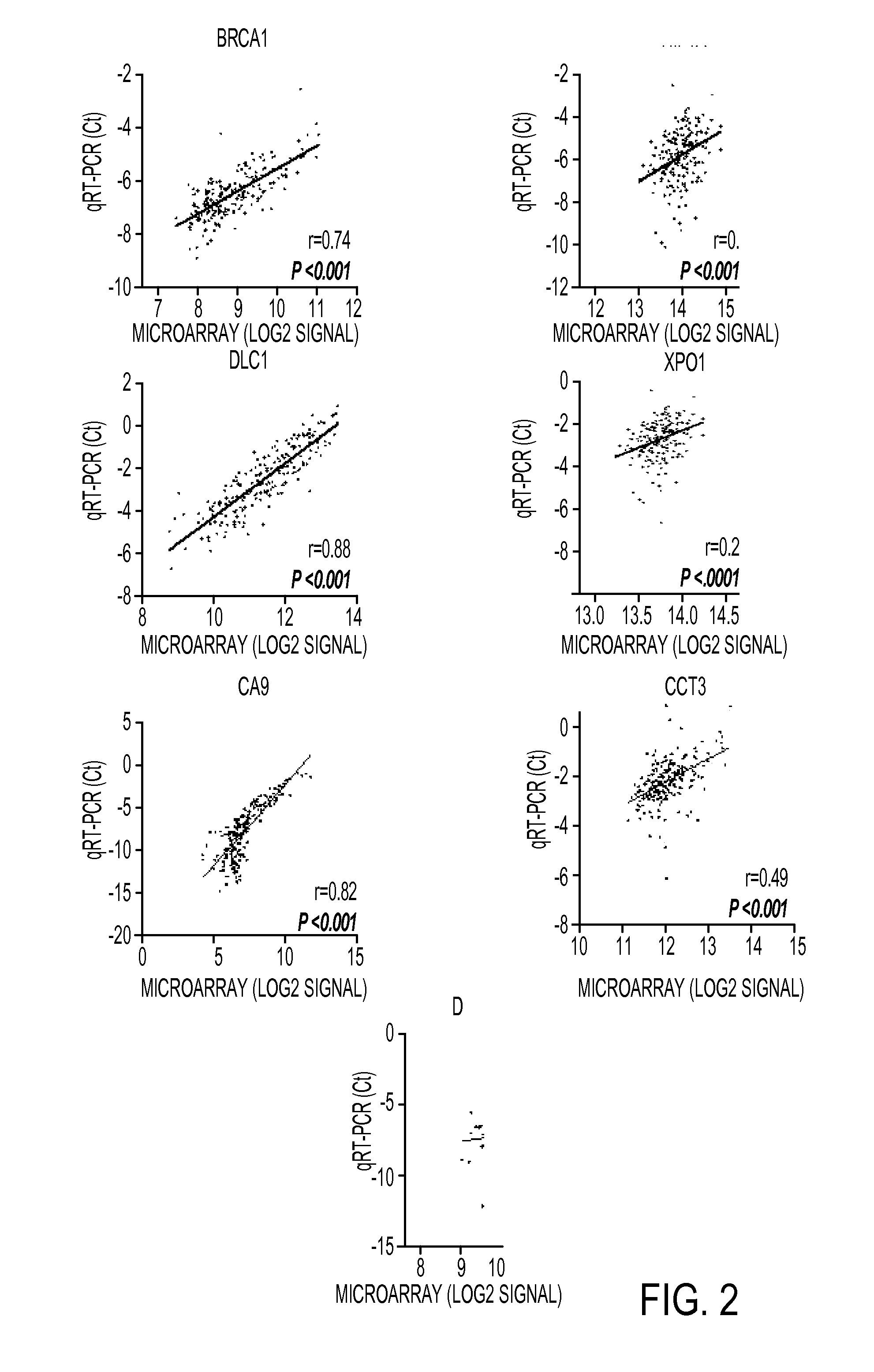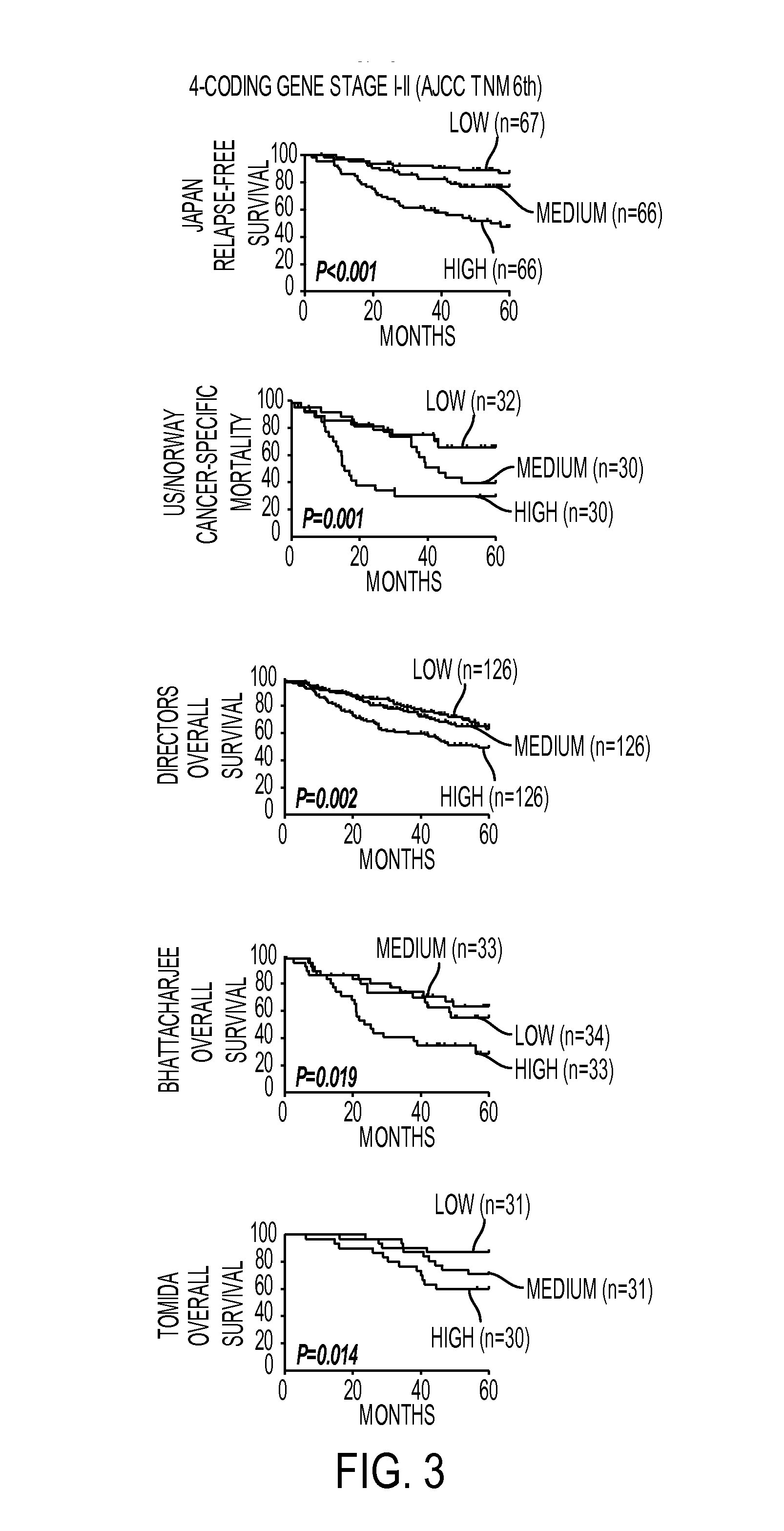Expression protein-coding and noncoding genes as prognostic classifiers in early stage lung cancer
a technology of expression protein and non-coding genes, which is applied in the direction of phosphorous compound active ingredients, nucleotide libraries, drug compositions, etc., can solve the problems of controversial benefit in stage i patients, and achieve the effect of reliable identification of patients and high risk of disease progression
- Summary
- Abstract
- Description
- Claims
- Application Information
AI Technical Summary
Benefits of technology
Problems solved by technology
Method used
Image
Examples
example 1
XPO1, BRCA1, HIF1A, CA9, DLC1, and CCT3 Expression are Associated with Relapse-Free Survival of Stage I-II Lung Cancer in the Japan Cohort
[0181]The strategy used for developing the coding gene classifier is shown in FIG. 1. 42 genes were selected based on literature support for a role in lung cancer (see Table 2, below).
TABLE 2Univariate Cox regression analysis in the Japan cohort using microarray data (AJCC TNF 6th, Stage I, n = 148)Gene SymbolAffymetrix Probe ID*HR (95% Cl)PReferencesDNMT1201697_s_atHigh vs. Low5.14 (2.11-12.5) 1XPO1208775_atHigh vs. Low4.14 (1.79-9.59) 0.001 2BRCA1204531_s_atHigh vs. Low4.12 (1.78-9.53) 0.001 3HIF1A200969_atHigh vs. Low3.03 (1.40-6.57) 0.005 4, 5, 6CA9205199_atHigh vs. Low2.95 (1.37-6.39) 0.006 7, 8DLC1210762_s_atHigh vs. Low0.34 (0.16-0.74) 0.007 2CCT3200910_atHigh vs. Low2.91 (1.35-6.30) 0.007 5SCLY221575_atHigh vs. Low2.49 (1.18-5.29) 0.017 2MMD203414_atHigh vs. Low2.21 (1.06-4.58) 0.034 9STK24208855_s_atHigh vs. Low2.16 (1.04-4.49) 0...
example 2
BRCA1, HIF1A, DLC1, and XPO1 are Associated with Cancer-Specific Mortality in the Combined US / Norway Cohort
[0184]All six genes were measured by qRT-PCR in the combined US / Norway cohort (stage I-II, n=92). The expression of BRCA1 (HR=3.21, 95% CI, 1.70 to 6.07, P<0.001), HIF1A (HR=2.01, 95% CI, 1.07 to 3.57, P=0.029), DLC1 (HR=0.45, 95% CI, 0.25 to 0.85, P=0.013), and XPO1 (HR=2.06, 95% CI, 1.12 to 3.76, P=0.019) were each significantly associated with cancer-specific mortality in the combined US / Norway cohort by Cox regression (Table 3, above).
example 3
A Four Coding Gene Classifier is Associated with Prognosis in Five Independent Cohorts
[0185]It was demonstrated that BRCA1, HIF1A, DLC1, and XPO1 are associated with prognosis in multiple cohorts from different regions of the world providing strong evidence that these can be useful prognostic biomarkers. In an attempt to make a robust prognostic classifier for lung cancer, a Cox regression model was developed using the expression of these four coding genes. Guidelines for prognostic factor studies in NSCLC recommends including the results in stage II patients with low risk of recurrence as well as stage I patients (Subramanian J, Simon R. Gene expression-based prognostic signatures in lung cancer: ready for clinical use? J Natl Cancer Inst. 2010; 102:464-74). Therefore, a gene classifier was built on all of the stage I and II patients in the Japan cohort (n=199) using multivariate Cox regression on linear expression values of each of the four genes. The resulting model was “classifi...
PUM
| Property | Measurement | Unit |
|---|---|---|
| size | aaaaa | aaaaa |
| time | aaaaa | aaaaa |
| CT | aaaaa | aaaaa |
Abstract
Description
Claims
Application Information
 Login to View More
Login to View More - R&D
- Intellectual Property
- Life Sciences
- Materials
- Tech Scout
- Unparalleled Data Quality
- Higher Quality Content
- 60% Fewer Hallucinations
Browse by: Latest US Patents, China's latest patents, Technical Efficacy Thesaurus, Application Domain, Technology Topic, Popular Technical Reports.
© 2025 PatSnap. All rights reserved.Legal|Privacy policy|Modern Slavery Act Transparency Statement|Sitemap|About US| Contact US: help@patsnap.com



